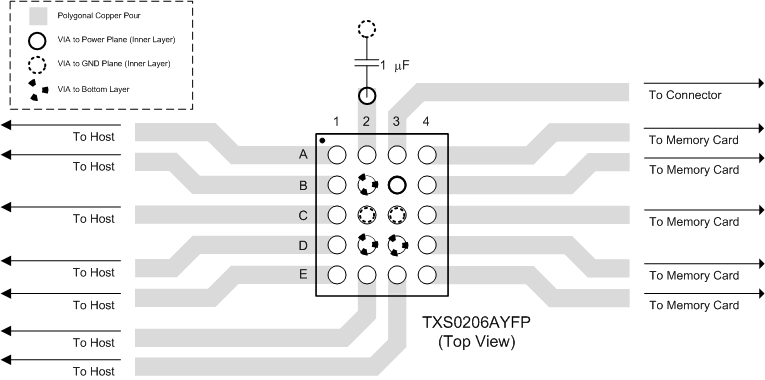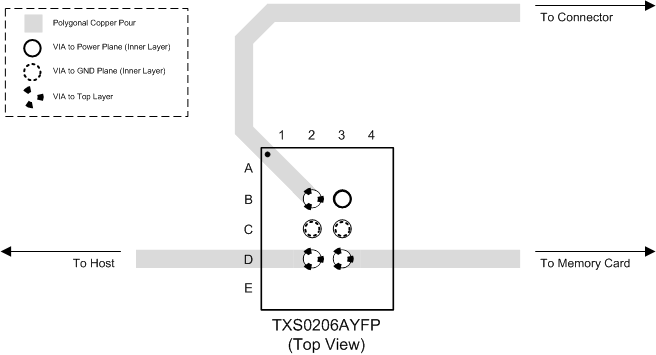SCES833B November 2011 – April 2016 TXS0206A
PRODUCTION DATA.
- 1 Features
- 2 Applications
- 3 Description
- 4 Revision History
- 5 Pin Configuration and Functions
-
6 Specifications
- 6.1 Absolute Maximum Ratings
- 6.2 ESD Ratings
- 6.3 Recommended Operating Conditions
- 6.4 Thermal Information
- 6.5 Electrical Characteristics
- 6.6 Timing Requirements—VCCA = 1.2 V ± 0.1 V
- 6.7 Timing Requirements—VCCA = 1.8 V ± 0.15 V
- 6.8 Timing Requirements—VCCA = 3.3 V ± 0.3 V
- 6.9 Switching Characteristics—VCCA = 1.2 V ± 0.1 V
- 6.10 Switching Characteristics—VCCA = 1.8 V ± 0.15 V
- 6.11 Switching Characteristics—VCCA = 3.3 V ± 0.3 V
- 6.12 Operating Characteristics —VCCA = 1.2 V
- 6.13 Operating Characteristics —VCCA = 1.8 V
- 6.14 Operating Characteristics — VCCA = 3.3 V
- 6.15 Typical Characteristics
- 7 Parameter Measurement Information
- 8 Detailed Description
- 9 Application and Implementation
- 10Power Supply Recommendations
- 11Layout
- 12Device and Documentation Support
- 13Mechanical, Packaging, and Orderable Information
Package Options
Mechanical Data (Package|Pins)
- YFP|20
Thermal pad, mechanical data (Package|Pins)
Orderable Information
11 Layout
11.1 Layout Guidelines
To ensure reliability of the device, TI recommends following common printed-circuit board layout guidelines.
- Bypass capacitors should be used on power supplies.
- Short trace lengths should be used to avoid excessive loading
- PCB signal trace-lengths must be kept short enough so that the round-trip delay of any reflection is less than the one shot duration, approximately 30 ns, ensuring that any reflection encounters low impedance at the source driver
- With very heavy capacitive loads, the one-shot can time-out before the signal is driven fully to the positive rail, so it is recommended that this lumped-load capacitance be considered and kept below 50 pF to avoid O.S. retriggering, bus contention, output signal oscillations, or other adverse system-level affects.
11.2 Layout Example
 Figure 10. TXS0206A Example Layout (Top Layer)
Figure 10. TXS0206A Example Layout (Top Layer)
 Figure 11. TXS0206A Example Layout (Bottom Layer)
Figure 11. TXS0206A Example Layout (Bottom Layer)